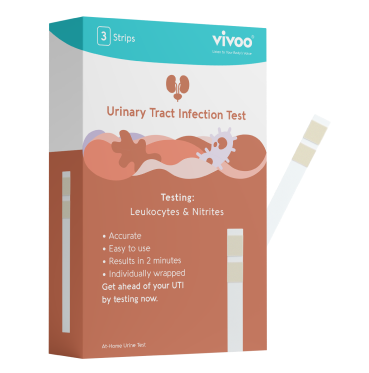Oxygen levels in the body are an important indicator of overall health and well-being. Low oxygen levels can be a sign of a variety of health conditions, including lung disease, heart disease, and sleep apnea.
In some cases, it's important to be able to check oxygen levels at home, and there are a number of tools and methods available to do so. In this guide, we will explore various options for checking oxygen levels at home, including pulse oximeters, oxygen concentrators, and other devices.
We will also discuss why you should check your oxygen levels at home. It is important to note that, before trying any home testing, it's always recommended to check with a healthcare professional, in case there is an underlying medical condition that needs to be treated.
What is the purpose of pulse oximetry?
People with lung diseases may have lower blood oxygen levels than usual, therefore pulse oximetry may assist determine whether there is a problem.
The more damaged the lungs are, the more likely there will be an issue with oxygen absorption. Pulse oximetry may also be used to assess the severity of a person's lung disease.

Why should I check the oxygen levels in my blood?
Checking the oxygen levels in your blood is an important way to monitor your respiratory and cardiovascular health. Oxygen is vital for the body's cells to function properly and low oxygen levels, also known as hypoxemia, can be a sign of a number of health issues.
By monitoring your oxygen levels, you can identify if you have low oxygen levels, which can be an early warning sign of an underlying health issue. This can allow you to take action early, before the condition becomes more severe, and improve your overall health. Additionally, it can help your healthcare provider to track your progress and adjust treatment as needed.
What can affect my oxygen levels?
There are many things that might alter your body's oxygen levels. Some are chronic illnesses, such as emphysema or lung damage, while others are more incidental, such as having a chest infection or being at a high altitude.
How can blood oxygen levels be measured?
There are two methods for measuring blood oxygen levels: collecting a blood sample from your body with a needle (typically in the wrist or earlobe) or using a pulse oximeter.
Can I test my blood oxygen levels (SP02) at home?
Yes! Using a Finger Pulse Oximeter, a little gadget connected to your finger that measures the quantity of oxygen in your blood as it travels through your body. The Oximeter measures SpO2, which is an estimate of the quantity of oxygen in your blood.
A chemical called hemoglobin transports oxygen throughout your body in red blood cells. A finger pulse oximeter monitors the amount of oxygen carried by the hemoglobin in your blood. This is referred to as oxygen saturation and is expressed as a percentage.
What is the average blood oxygen level?
A SpO2 measurement of 96% or above is considered normal oxygen saturation. A SpO2 level of 92% or below may suggest that your blood is undersaturated. Inadequate saturation may result in chest discomfort, shortness of breath, and an elevated heart rate. To increase oxygen level at home will help you to get better before contacting a doctor.
Oxygen levels of 92% or less are regarded as excessively low and are typically considered a medical emergency. If your levels are this low or have decreased 5% from your typical baseline, please seek immediate medical assistance, such as by going to A&E or contacting 911.

How does a pulse oximeter work?
A pulse oximeter detects how much light your blood absorbs. This informs us how much oxygen is in your blood. The pulse oximeter emits two lights, one red and one infrared, via your fingertip or earlobe.
Blood with a high concentration of oxygen absorbs more infrared light and allows more red light to flow through. Without adequate oxygen, the blood absorbs more red light and allows more infrared light to pass through. If your blood cells are depleted of oxygen, they will seem bluer.
What will the results look like?
The proportion of oxygen in your blood is shown on the oximeter. The usual blood oxygen saturation level for a healthy person is 95-100%. If the oxygen level falls below this threshold, it may indicate a lung issue. A change in your oxygen level might indicate that your lung status has deteriorated.
When someone has pneumonia or COVID-19, oxygen saturation may assist determine if they need to be hospitalized. If you are concerned about your breathlessness, you should always seek medical attention, even if your monitor indicates normally.
Who should have regular oxygen checks?
People with lung conditions, such as COPD, may need to have their SpO2 levels checked more often since they have a lower blood oxygen level than a healthy person. Monitoring levels may aid in the detection of issues.
For the same reasons, those suffering from respiratory disorders such as asthma or cardiovascular problems may benefit from more frequent monitoring of their blood oxygen levels.














